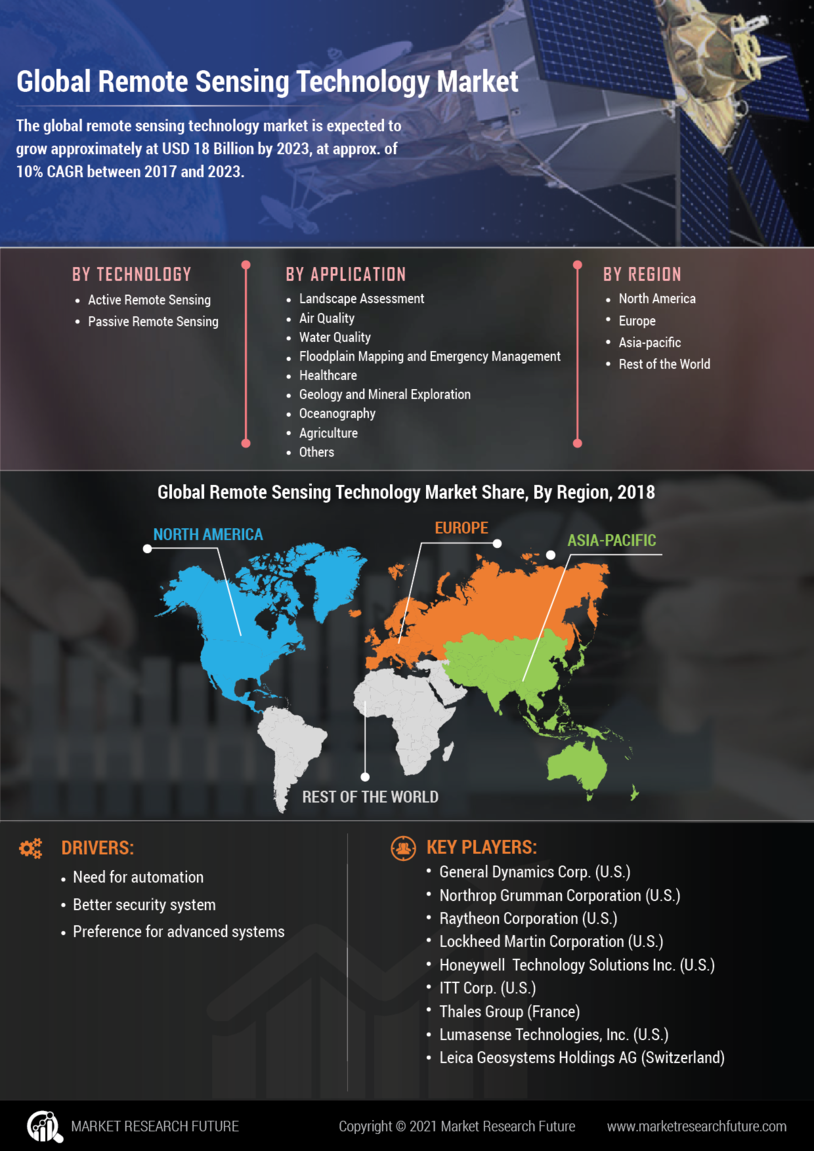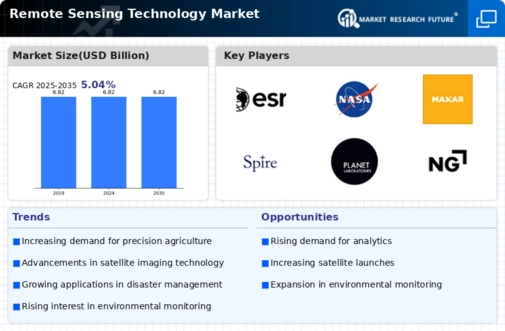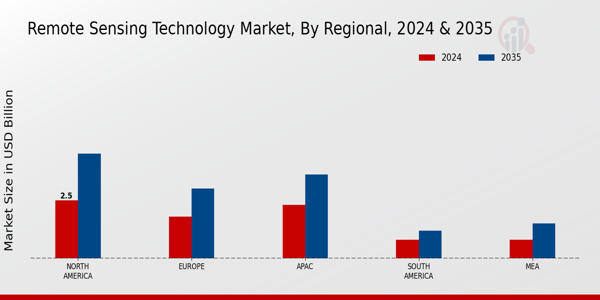Market Growth Projections
The Global Remote Sensing Technology Market Industry is projected to maintain a steady trajectory, with a market value of 6.82 USD Billion in 2024 and remaining stable at 6.82 USD Billion by 2035. The compound annual growth rate (CAGR) is anticipated to be 0.0% for the period from 2025 to 2035. This stability suggests a mature market, where existing technologies are optimized rather than new innovations driving growth. Stakeholders may focus on enhancing operational efficiencies and expanding applications across various sectors to sustain market relevance.
Technological Advancements
The Global Remote Sensing Technology Market Industry is experiencing rapid technological advancements, particularly in sensor technology and data processing capabilities. Innovations such as high-resolution satellite imagery and advanced aerial sensors enhance the accuracy and efficiency of data collection. For instance, the integration of artificial intelligence in data analysis allows for real-time processing and interpretation of vast datasets. This evolution not only improves the quality of remote sensing applications across various sectors, including agriculture, forestry, and urban planning, but also drives market growth as organizations increasingly rely on precise data for informed decision-making.
Expansion of Smart City Initiatives
The Global Remote Sensing Technology Market Industry is benefiting from the expansion of smart city initiatives worldwide. Urban planners and local governments are increasingly leveraging remote sensing technologies to optimize urban infrastructure and enhance public services. For example, satellite data is used to monitor traffic patterns, assess land use, and manage utilities more effectively. As cities strive to become more sustainable and efficient, the demand for remote sensing solutions is likely to rise, fostering innovation and investment in this sector. This trend could contribute to a stable market environment as urbanization continues to accelerate.
Emerging Applications in Agriculture
The Global Remote Sensing Technology Market Industry is experiencing growth due to emerging applications in agriculture. Farmers and agribusinesses are adopting remote sensing technologies to enhance crop monitoring, yield prediction, and precision farming practices. For instance, satellite imagery is utilized to assess crop health and optimize irrigation practices. This data-driven approach not only improves agricultural productivity but also promotes sustainable farming practices. As the global population continues to rise, the demand for food security is likely to drive further investments in remote sensing technologies, ensuring the market's resilience and growth.
Growing Demand for Environmental Monitoring
The Global Remote Sensing Technology Market Industry is witnessing a surge in demand for environmental monitoring solutions. Governments and organizations are increasingly focused on addressing climate change, deforestation, and natural resource management. Remote sensing technologies provide critical data for tracking environmental changes, enabling effective policy formulation and resource allocation. For example, satellite imagery is utilized to monitor deforestation rates and assess the health of ecosystems. This heightened awareness and regulatory pressure are likely to propel investments in remote sensing technologies, contributing to the market's stability and growth.
Increased Investment in Defense and Security
The Global Remote Sensing Technology Market Industry is significantly influenced by increased investments in defense and security applications. Nations are prioritizing surveillance and reconnaissance capabilities to enhance national security. Remote sensing technologies, such as satellite imagery and aerial reconnaissance, play a pivotal role in military operations and border security. For instance, countries are deploying advanced remote sensing systems to monitor potential threats and gather intelligence. This trend is expected to sustain market growth, as defense budgets continue to allocate substantial resources towards enhancing remote sensing capabilities.












